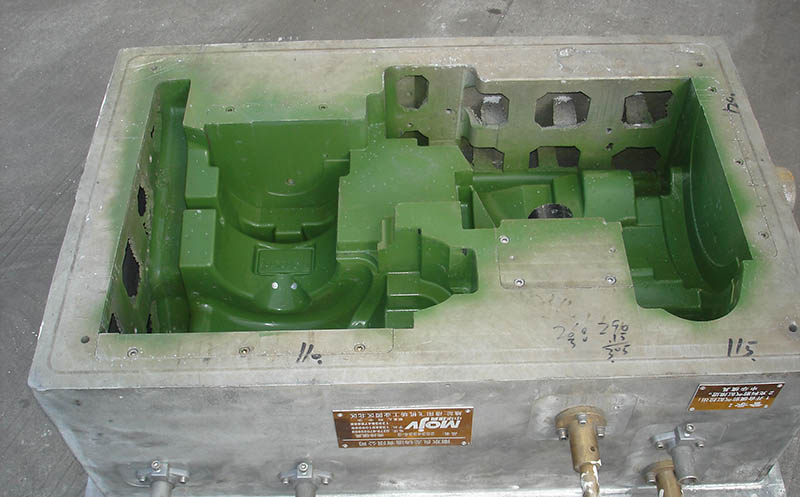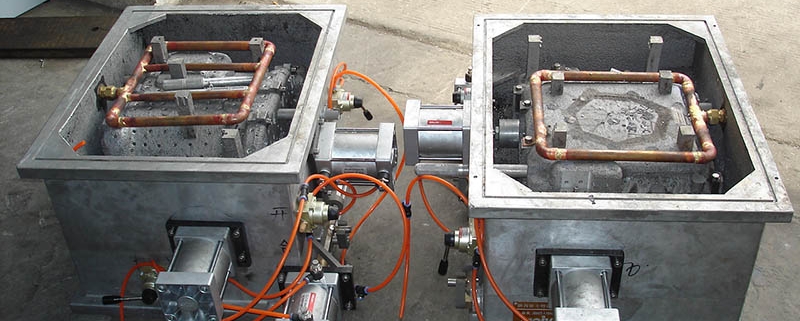What is Lost foam sand casting?
The sand casting process is a casting method in which sand is used as a main material to prepare a mold. Sand casting is the most traditional casting method. Because sand casting is characterized by its own shape (not limited by the shape, size, complexity and alloy type, short production cycle and low cost), sand casting is still the most widely used casting method in casting production, especially single piece or Small batch castings!
What are the main steps of Lost foam sand casting?
The basic process of the traditional sand casting process has the following steps: sanding, molding, core making, molding, pouring, falling sand, grinding, inspection, etc.
1. In the sand mixing stage, the sand and core sand are prepared for the modeling. Generally, the sand mixer is used to put the old figure and the appropriate amount of clay to stir.
2. During the molding stage, molds and core boxes are made according to the drawings of parts. Generally, single pieces can be made of wood molds and mass production to make plastic molds or metal molds (commonly known as iron molds or steel molds), and large-scale castings can be used to make molds. Nowadays, the molds are basically made of engraving machines, so the production cycle is greatly shortened, and the molding generally takes 2 to 10 days.
3. Modeling (core making) stage: including modeling (formation cavity for forming castings with molding sand), core making (forming the internal shape of the casting), matching mold (putting the core into the cavity, and fitting the upper and lower flasks ). Modeling is a key link in casting.
4. Melting stage: According to the required metal composition, the chemical composition is distributed, and the appropriate melting furnace is used to melt the alloy material to form a qualified liquid metal liquid (including qualified components and qualified temperature). Smelting generally uses a cupola or an electric furnace (due to environmental protection requirements, the cupola is now basically banned, and the electric furnace is basically used).
5. Pouring stage: Inject the molten iron melted in the electric furnace into the finished type with a ladle. The pouring of molten iron requires attention to the speed of pouring, so that molten iron fills the entire cavity. In addition, pouring molten iron is dangerous and needs to be safe!
6. Cleaning stage: After the molten metal is solidified after pouring, take the hammer to remove the gate and shake off the sand of the casting, and then use the sand blasting machine to spray sand, so that the surface of the casting will look very clean! The casting blanks that are not strictly required can be ex-factory after inspection.
7, casting processing, for some castings with special requirements or some castings that can not meet the requirements of casting, may require simple processing. Generally, the grinding wheel or the sander is used for processing and polishing, and the burr is removed to make the casting more smooth.
8. Casting inspection, casting inspection is generally in the process of cleaning or processing, and the general failure has been found out. However, some castings have individual requirements and need to be checked again. For example, some castings require a central hole to be inserted into a 5 cm shaft, so you need to wear a 5 cm shaft for a try.
After the above eight steps, the castings are basically formed. For castings requiring high precision, machining is required, because it is not included in the casting range. With the advancement of casting technology, traditional sand casting is either improved or replaced by other casting methods. Continuous innovation is the eternal theme, which is the inherent quality and fundamental that must be possessed by the foundry!

Solution for Lost foam sand casting pollution:
1. Energy saving and consumption reduction: Energy saving and consumption reduction in foundry production mainly exist in metal melting and heat treatment. Increasing the casting yield and yield by using a heat-insulating riser, a metal treatment agent, a ceramic filter, and an optimized production process are the biggest ways to save energy and reduce consumption.
2. Reduce dust and harmful gas emissions: Dust and harmful gas emissions mainly exist in the aspects of molding core making, pouring, unboxing sand falling, shot blasting cleaning and casting repair and cleaning. The most important material in the molding core process is the binder, which determines the investment in the production process of the casting, the scale of the production workshop, the tooling mold, the molding core equipment, the old sand recycling equipment and the cleaning equipment. However, most of the binders used in foundry are organic chemical materials, which are the main source of harmful gas emissions. It is a long-term pursuit of casting materials researchers to use inorganic binders instead of organic binders to improve the performance of organic binders and reduce the amount of binders.
3. Recycling of residual waste in the production process: Recycling of residual waste in the production process exists in the recycling of non-metallic materials except for the disposal of castings. The reuse of old sand is a major content. . At present, there are three methods for recycling silica sand, mechanical regeneration, thermal regeneration, and wet regeneration.
You can also visit the application of the lost foam casting product.



